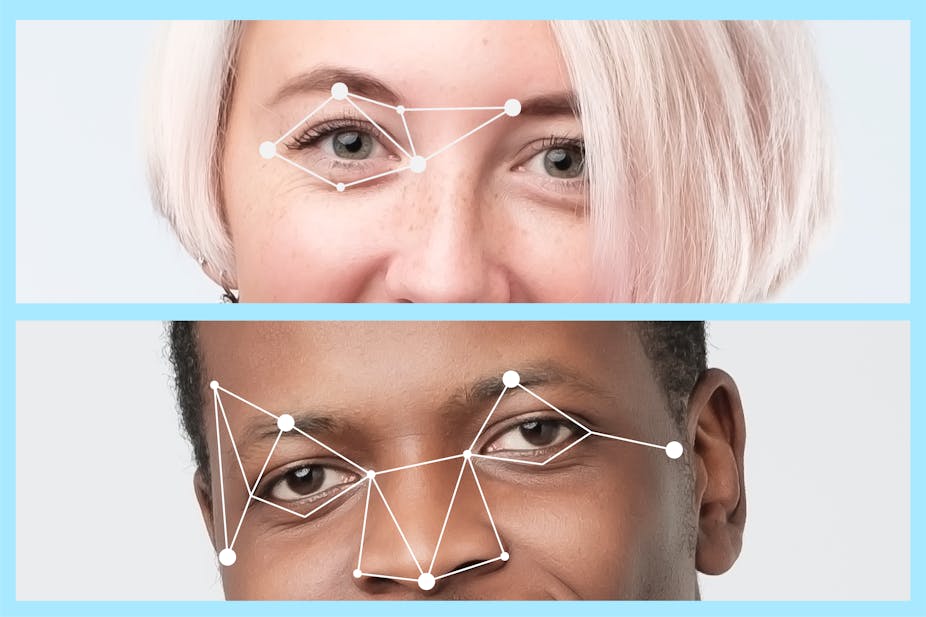Do you never forget a face? Are you one of those people who can spot the same nameless extras across different TV programmes and adverts? Are you the family member always called on to identify or match faces in old photographs? If so, you may be a “super-recogniser” – the term science uses to describe people with an exceptional ability to recognise faces.
Over the past decade, psychologists have established that our ability to recognise faces varies a lot – much like the ability to sing, for instance. While a small proportion of the population simply can’t hold a note at all, and most are content to confine their very average efforts to the shower, at the top end there are outstanding singers, such as Adele.
Researchers believe the same applies to facial-recognition ability. A small proportion of people struggle to recognise friends and family (a condition known as prosopagnosia), most people are “typical recognisers”, and at the top there is a small number of people who excel at recognising faces – super-recognisers.
Face off
Since 2009, researchers have been assessing super-recognisers and their abilities. These people are usually classed as such if they reach a threshold score on the Cambridge face memory test. The test asks participants to learn a series of faces and then recognise them from different photographs. More recently, though, the focus has shifted to ensuring that super-recognisers are defined by consistently high scores across a range of face tests, including matching pairs of unfamiliar faces – a task border-control officers perform when matching passport photos to real faces.
Research shows three main things. One, that super-recognisers outperform most people at learning new faces and then recognising them from headshots. Two, they are better at deciding whether two photos of unfamiliar people show the same person or two different people. And three, that the ability appears to be have a genetic basis and is limited to faces.
The emergence of super-recognisers and the growing body of evidence that has identified their skills has enabled border-control agencies and police to recruit people who excel at facial-identity verification.
While research has shown that in most circumstances training and experience don’t make people better at recognising faces, recruiting people who excel at this could significantly increase fraud detection rates at border control, where a traveller’s face doesn’t match their passport photo, for example. It could also decrease false conviction rates from evidence that is based on a suspect’s face being incorrectly matched to CCTV footage.

While not all super-recognisers perform perfectly all of the time or across all tests, one of the best solutions would be to pair the best among them with our best computer face-recognition algorithms to try and establish a level of best performance.
Several agencies in the UK, including London’s Metropolitan Police, have established dedicated super-recogniser units to assist in facial identification tasks. But, until now, a question remained as to whether super-recognisers would still show enhanced performance for faces that were outside their own ethnic group.
Most super-recogniser tests have used Caucasian (white) faces, and most super-recognisers who have been tested have been white. Within psychological science, it is well established that recognising faces from another ethnic group is significantly harder than recognising faces from your own ethnic group.
Given that border control and police officers are likely to encounter people from a large range of ethnic groups, it is important to assess whether super-recogniser ability also applies to faces from other ethnicities.
New research
This question was tested in our recent study, where a group of white super-recognisers outperformed a white control group of typical-recognisers when asked to match pairs of Egyptian faces. The study showed that while super-recognisers showed superior performance to typical-recognisers, there was still a “cost” to their accuracy in relation to the white-face test.
This lends support to the idea that super-recognisers are people performing at the top end of the facial recognition scale, rather than doing something completely different to the average person. This finding shows that deploying super-recognisers at border control or in policing should still provide a benefit, even when they are tasked with reviewing faces outside their ethnic group.
Despite the super-recognisers outperforming the control group, they were not as good at matching Egyptian faces as they were at matching white faces. Recent research from the University of Bournemouth shows that while white super-recognisers outperform the white control-group members, they do not match native observers’ levels of accuracy.
So white super-recognisers will outperform white control-group members when asked to match Egyptian or Asian faces, for example, but native Egyptian or Asian observers will still outperform the white super-recognisers, meaning agencies seeking to recruit super-recognisers will see a performance boost. But if they are assessing a particular ethnic group, they will need to seek the help of native observers as well.
Our work builds on this previous research, and the two combined show that the super-recogniser ability does extend to faces of other ethnicities. It provides further evidence to support the selection of super-recognisers for roles in which correctly identifying faces is critical.

